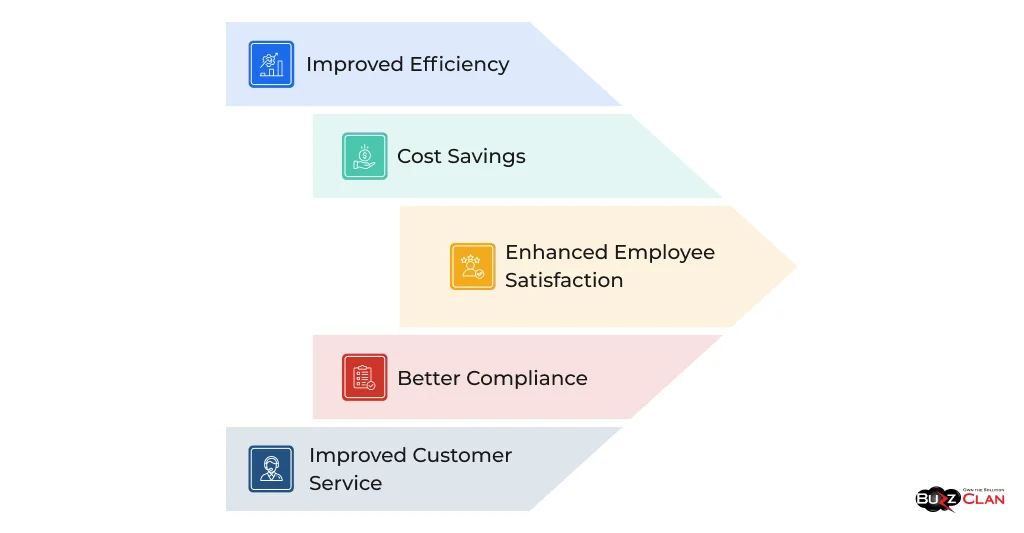Mastering Workforce Efficiency: A Comprehensive Guide to NICE Workforce Management
Anjali Agrawal
Jul 10, 2024
Introduction
Effective workforce management has become critical to organizational success in today’s fast-paced business environment. As companies strive to optimize operations, reduce costs, and improve customer satisfaction, the need for robust workforce management solutions has never been greater. NICE Workforce Management (WFM) has emerged as a leading solution, offering a comprehensive suite of tools to help businesses streamline their workforce operations and drive efficiency.
This blog post aims to provide a comprehensive guide to NICE Workforce Management, exploring its features, use cases, target audience, and benefits. Whether you’re a large enterprise looking to optimize your call center operations or a small business seeking to improve your staff scheduling, this guide will offer valuable insights into how NICE WFM can transform workforce management practices.
Throughout this article, we’ll delve into the key features of NICE WFM, examine its applications across various industries, and discuss best practices for implementation and use. By the end of this guide, you’ll understand how NICE Workforce Management can help your organization achieve its workforce optimization goals.
Overview of NICE Workforce Management
NICE Workforce Management is a comprehensive suite of tools designed to help organizations optimize their workforce operations. It combines advanced forecasting, scheduling, and real-time management capabilities to ensure businesses have the right people and skills in the right place and time.
At its core, NICE WFM aims to balance the often-competing needs of efficient operations, employee satisfaction, and customer service quality. By leveraging sophisticated algorithms and machine learning technologies, NICE WFM provides organizations with the insights and tools they need to make data-driven decisions about their workforce.
Key Features of NICE Workforce Management

- Forecasting and Scheduling:
NICE WFM offers advanced forecasting capabilities that use historical data, trend analysis, and machine learning to predict future workload and staffing needs. The scheduling module then uses these forecasts to create optimal schedules that balance business needs, employee preferences, and labor regulations.
- Real-Time Adherence:
This feature allows managers to monitor employee adherence to schedules in real time. It provides instant visibility into who is working, on break, and who may be running late, enabling quick adjustments to maintain service levels.
- Intraday Management:
NICE WFM includes robust intraday management tools that help organizations handle unexpected changes in workload or staff availability. It can automatically suggest schedule adjustments or voluntary time off opportunities to maintain optimal staffing levels throughout the day.
- Reporting and Analytics:
The platform offers comprehensive reporting and analytics capabilities, providing insights into key performance indicators (KPIs) such as schedule efficiency, adherence rates, and forecasting accuracy. These insights help managers make data-driven decisions to continually improve workforce performance.
- Employee Self-Service:
NICE WFM includes a user-friendly self-service portal where employees can view their schedules, request time off, swap shifts with colleagues, and update their availability preferences. This feature empowers employees and reduces the administrative burden on managers.
- Integration Capabilities:
NICE WFM can integrate seamlessly with other systems such as payroll, HR management, and customer relationship management (CRM) platforms. This integration capability, particularly evident in the NICE IEX Workforce Management system, ensures data consistency across different business functions and enables a holistic approach to workforce management.
Use Cases of NICE Workforce Management
- Call Centers:
NICE WFM is widely used in call centers to optimize agent scheduling and improve service levels. It helps call center managers forecast call volumes, schedule agents based on their skills and availability, and make real-time adjustments to handle unexpected spikes in call volume.
- Retail Industry:
In the retail sector, NICE WFM helps manage store staff efficiently. It can forecast customer traffic patterns, create schedules that align with peak shopping hours, and ensure adequate staffing for different departments within a store.
- Healthcare Sector:
Healthcare facilities use NICE WFM to ensure optimal staffing levels across different departments and shifts. It helps manage the complex scheduling needs of healthcare professionals, ensure compliance with labor regulations, and maintain high standards of patient care.
- Financial Services:
Banks and other financial institutions use NICE WFM to optimize their workforce across various functions, from branch operations to back-office processing. It helps manage staffing for peak transaction times and ensures adequate coverage for specialized roles.
Target Audience for NICE Workforce Management
- Large Enterprises:
NICE WFM is particularly well-suited for large enterprises with complex workforce management needs. Its scalability and advanced features make it ideal for organizations managing many employees across multiple locations or departments.
- Small and Medium Businesses (SMBs):
While often associated with large enterprises, NICE WFM also offers solutions tailored for SMBs. These businesses can benefit from improved scheduling efficiency and reduced administrative overhead, even with smaller workforces.
- Specific Departments:
1. Human Resources: HR departments use NICE WFM for strategic workforce planning, ensuring that the organization has the right mix of skills and staffing levels to meet business objectives.
2. Operations: Operations managers leverage NICE WFM to maintain efficiency, manage costs, and ensure service quality through optimal staffing.
3. IT Departments: IT plays a crucial role in implementing and maintaining NICE WFM, ensuring its integration with other systems, and managing user access and security.
Benefits of NICE Workforce Management

- Improved Efficiency:
NICE WFM helps organizations significantly improve their workforce efficiency. Businesses can reduce overstaffing and understaffing by optimizing schedules and ensuring the right staffing levels, leading to better resource utilization.
- Cost Savings:
The platform’s ability to create optimal schedules and manage real-time adherence can lead to substantial cost savings. It helps reduce overtime, minimize idle time, and ensure staffing levels align closely with the workload.
- Enhanced Employee Satisfaction:
NICE WFM’s self-service features and ability to consider employee preferences in scheduling can lead to higher employee satisfaction. When employees have more control over their schedules and feel that their preferences are being considered, it often results in improved morale and reduced turnover.
- Better Compliance:
The system helps organizations comply with labor laws and regulations by automatically considering required break times, maximum work hours, and minimum rest periods when creating schedules.
- Improved Customer Service:
NICE WFM helps organizations maintain high customer service levels by ensuring optimal staffing. This is particularly crucial in call centers and retail industries, where customer satisfaction is directly linked to staff availability.
Getting Started with NICE Workforce Management
Implementing NICE WFM involves several key steps:
- Assessment: Evaluate your current workforce management processes and identify areas for improvement.
- Planning: Develop a detailed implementation plan, including timelines, resources, and key milestones.
- Configuration: Work with NICE or a certified partner to configure the system for your needs.
- Data Migration: Transfer historical data into the new system for accurate forecasting.
- Integration: Integrate NICE WFM with other relevant systems in your organization.
- Training: Provide comprehensive training to all users, including managers and employees.
- Go-Live: Launch the system, closely monitoring its performance in the initial weeks.
- Continuous Improvement: Regularly review the system’s performance and adjust as needed.
Access to NICE WFM is typically provided through a secure login portal. Users are given individual credentials that determine their access levels within the system.
Best Practices for Using NICE Workforce Management

- Regular Training:
Ensure that all users receive regular training on the system. This includes initial training for new users and refresher courses for existing users as new features are released.
- Continuous Monitoring:
Monitor key performance indicators regularly and adjust schedules and forecasts as needed. This proactive approach helps maintain optimal performance over time.
- Leveraging Analytics:
Make full use of NICE WFM’s analytics capabilities. Use the insights gained to make data-driven decisions about workforce management strategies.
- Employee Engagement:
Involve employees in the workforce management process. Encourage them to use the self-service features and provide feedback on their scheduling preferences.
- Regular System Updates:
Keep the system updated with the latest versions and patches. This ensures you have access to the newest features and security updates.
- Customization:
Take advantage of NICE WFM’s customization options to tailor the system to your business needs and processes.
- Integration:
Fully integrate NICE WFM with other relevant systems in your organization to create a seamless workflow and ensure data consistency across platforms.
Conclusion
NICE Workforce Management offers a powerful solution for organizations looking to optimize their workforce operations. Its comprehensive features, from advanced forecasting and scheduling to real-time adherence monitoring and analytics, provide businesses with the tools to improve efficiency, reduce costs, and enhance employee and customer satisfaction.
Whether you’re a large enterprise managing a complex workforce or a smaller organization looking to streamline your scheduling processes, NICE WFM offers scalable solutions to meet your needs. Organizations can transform their workforce management processes by following best practices fully leveraging the system’s capabilities and gaining a significant competitive advantage.
As workforce management continues to evolve, with trends like remote work and flexible scheduling becoming more prevalent, solutions like NICE WFM will play an increasingly crucial role in helping businesses adapt and thrive. By investing in robust workforce management tools and strategies, organizations can position themselves for success in an ever-changing business landscape.
FAQs

Get In Touch
